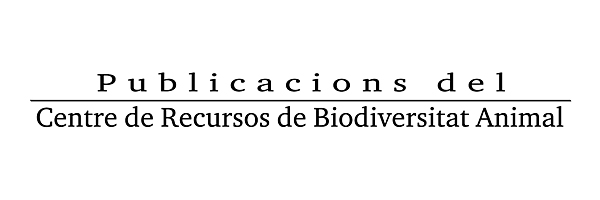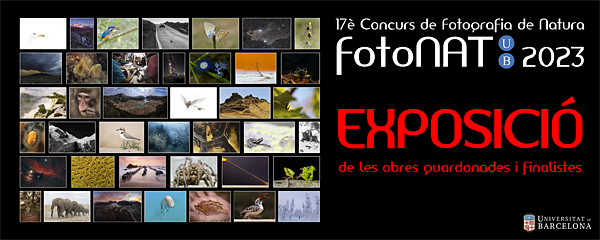Dreceres
Horari
-
De dilluns a dijous de 9 a 13h i de dilluns a dimecres de 15 a 17h.
Novetats
- Cursos | Tue May 07 02:00:00 CEST 2024
-
Curs d'Il·lustració Científica: Aus, Rèptils, Amfibis i Peixos - Edició d'abril de 2024
Cursos | Tue Apr 16 02:00:00 CEST 2024 - Exposicions | Wed Dec 13 01:00:00 CET 2023
-
Resultats del Concurs de Fotografia de Natura fotoNAT-UB 2023
Concurs fotoNAT-UB | Wed Dec 13 01:00:00 CET 2023 - Publicacions | Fri Sep 15 02:00:00 CEST 2023
-
Contribució al catàleg dels àcars Oribàtids (Acari, Oribatida) de Catalunya. Primera aportació.
Publicacions | Fri Jul 21 02:00:00 CEST 2023 -
Exposició de la Col·lecció Mercè Durfort
Notícia | Fri Jun 23 02:00:00 CEST 2023 - Publicacions | Wed Jun 29 02:00:00 CEST 2022
-
Interacciones mutualistas entre animales y plantas. Addenda. Vídeos
Publicacions | Fri May 27 02:00:00 CEST 2022
- Cursos | Tue May 07 02:00:00 CEST 2024
-
Curs d'Il·lustració Científica: Aus, Rèptils, Amfibis i Peixos - Edició d'abril de 2024
Cursos | Tue Apr 16 02:00:00 CEST 2024
- Publicacions | Fri Sep 15 02:00:00 CEST 2023
-
Contribució al catàleg dels àcars Oribàtids (Acari, Oribatida) de Catalunya. Primera aportació.
Publicacions | Fri Jul 21 02:00:00 CEST 2023 - Publicacions | Wed Jun 29 02:00:00 CEST 2022
-
Interacciones mutualistas entre animales y plantas. Addenda. Vídeos
Publicacions | Fri May 27 02:00:00 CEST 2022
- Exposicions | Wed Dec 13 01:00:00 CET 2023
-
Exposició de la Col·lecció Mercè Durfort
Notícia | Fri Jun 23 02:00:00 CEST 2023
-
Resultats del Concurs de Fotografia de Natura fotoNAT-UB 2023
Concurs fotoNAT-UB | Wed Dec 13 01:00:00 CET 2023
-
Exposició de la Col·lecció Mercè Durfort
Notícia | Fri Jun 23 02:00:00 CEST 2023









